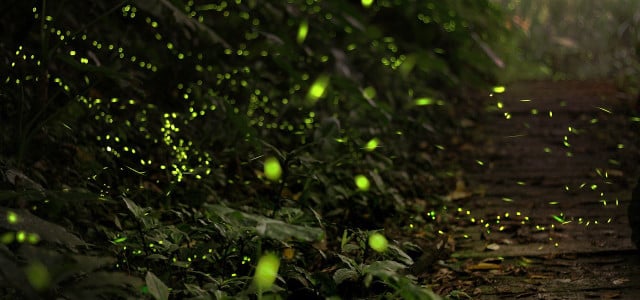Glow-in-the-dark trees could consume carbon instead of electricity and might seem like an unrealistic dream. Recent advances would suggest that glowing greenery isn't far away.
Imagine a magical world with glow-in-the-dark trees. It would remove our dependence on streetlights, and replace them with carbon-consuming giants that provide habitats, clean air, and biodiversity in urban areas. It all sounds like a futuristic, almost sci-fi concept, but glow-in-the-dark trees and plants have the potential to become a reality.
There are several life forms that glow in the dark. Research into creating glow-in-the-dark trees and plants has been ongoing since scientists began to experiment with the natural properties of these glowing organisms. Many life forms have an innate ability to light up in darkness. Could we use this to create glow-in-the-dark trees? Let’s find out.
What Are Glow-in-the-Dark Trees?
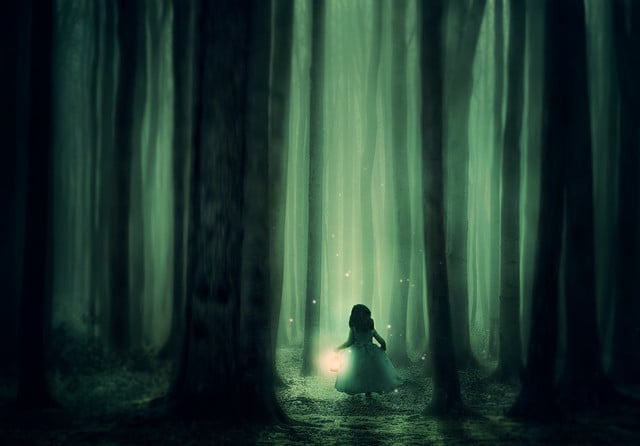
(Foto: CC0 / Pixabay / Darkmoon_Art)
Research into a natural phenomenon called bioluminescence has led to the concept of glow-in-the-dark trees. Bioluminescence is the term used for chemical reactions that result in a living organism producing and emitting light. These chemical reactions occur when enzymes act on chemicals, known as luciferins, in the organism. This chemical reaction results in the release of light and usually happens in the presence of oxygen.
Fireflies are the best-known bioluminescent creature, but they aren’t the only ones. Though bioluminescence does not crop up naturally among plants, numerous animals, microbes, and mushrooms can glow. Scientists are now experimenting with the genetic material from these bioluminescent organisms in the hope of creating glow-in-the-dark trees and plants.
Glow-in-the-dark Life Forms
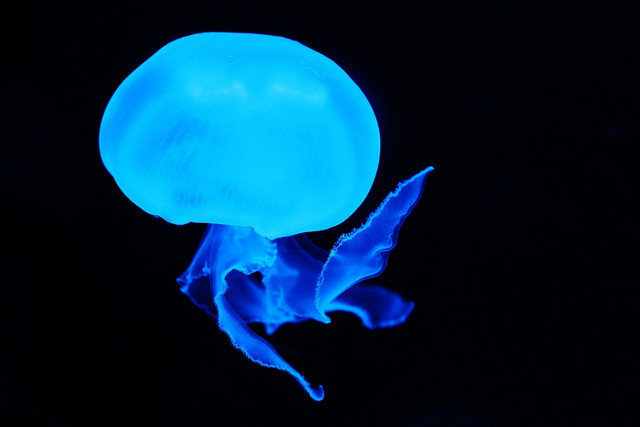


(Foto: CC0 / Pixabay / PublicDomainPictures)
Glow-in-the-dark trees and plants might be reliant on technology, but bioluminescence is a common natural phenomenon. You might imagine the deep sea to be a vast darkness where no sun shines and you would be right about the darkness. But because bioluminescence is so common here, the deep blue seas light up like a Las Vegas night sky or a vibrant computer game.
Bioluminescence is an innate trait found in many marine life forms, including bacteria, algae, jellyfish, worms, crustaceans, sea stars, fish, and sharks. In some cases, non-bioluminescent creatures ingest bioluminescent bacteria or other bioluminescent creatures to gain the ability to glow in the dark themselves. According to the National Oceanic and Atmospheric Association (NOAA), most ocean species, from bacteria to sharks, will have some bioluminescent family members. They acknowledge that the functions of bioluminescence are not fully understood, but explain that it appears to be used:
- As a defense mechanism to deter or avoid predators
- To lure or find prey
- For inter-species communication
Bioluminescence is very rare in freshwater life forms. On land, there are a few examples of bioluminescience including fireflies and glow worms. Several species of fungi are also bioluminescent, and some varieties can emit green light continuously for days. A phenomenon called foxfire causes partial glow-in-the-dark trees when bioluminescent fungi that live in tree trunks begin to glow. The fungi are called honey mushrooms and it is native to eastern North America.
Glow-in-the-dark Science
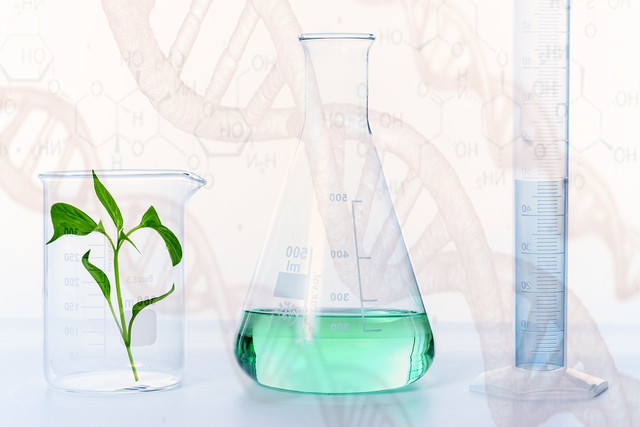


(Foto: CC0 / Pixabay / PhotoMIX-Company)
Several technologies and approaches are being studied in attempts to ultimately create glow-in-the-dark trees. The Glowing Plant Project is the first crowdfunding campaign for synthetic biology applications for glow-in-the-dark research that could ultimately replace our current lighting systems with completely natural sources. Knowledge and successful results have been evolving for around 12 years.
Bacterial Biouminescence
In 2010, a team of researchers studied the genes from fireflies and bioluminescent bacteria to explore the chemical activity and enzymes involved in bioluminescence. They then identified and built genetic components called ‘BioBricks’ that could be inserted into the genetic material of other life forms. The team managed to produce a range of colors by putting these genes into the Escherichia coli bacteria. They found that a regular wine bottle full of this genetically engineered bioluminescent bacteria gave off enough light to read bedside. Scientists have since been studying these and other genetic materials or biobricks to create glow-in-the-dark trees and plants.
Nanobionic Technology
Plant nanobionics is an exciting new area of study that might soon bring us those long sought-after glow-in-the-dark trees. This form of research aims to give plants new abilities and features that could eventually replace many electrical devices. The research is giving plants superpowers by fusing them with different types of nanoparticles. Creating glow-in-the-dark trees with nanoparticle technology could help the chemicals necessary for bioluminescence to reach the correct areas of the plant and prevent them from building to toxic levels.
Plants are being used for nanobionic purposes because of their unique abilities — like producing energy from the sun. A team of researchers at MIT has already engineered plants that can detect explosives, like land mines, and send alerts via a smartphone using nanobionic technology. This same team has successfully delivered chemicals and enzymes necessary for bioluminescence into water cress using nanoparticles. They have not yet achieved a high-intensity light of lasting duration but did create bioluminescence. They even turned the light off by adding enzyme inhibitors to the plant.
Fungal Bioluminesence
Just when we thought plastic-eating mushrooms were the key to saving the world, or the mushroom’s status as a superfood for energy and sustainability was award-worthy, glow-in-the-dark mushrooms are emerging as valuable eco-warriors too. Even more recently, a 2020 study by researchers in Russia and Austria has fused four genes from the DNA of a bioluminescent fungus called Neonothopanus nambi into the DNA of tobacco plants. Their experiments used a chemical (caffeic acid) that is naturally present in plants and produced plants that they claim glowed ten times brighter than the bioluminescence produced using bacterial genes.
French Inspiration
Inspirational experiments are underway across France, including at the capital’s Roissy-Charles-de-Gaulle airport and a small town around 30 miles southwest of Paris called Rambouillet. A company called Glowee is developing a liquid raw material from bioluminescent microorganisms that could replace the conventional light bulb. It is made with bioluminescent bacteria in saltwater aquariums that are packaged into aquarium tubes. An oxygen pump with create the conditions for bioluminescence, while switching off the pump will essentially turn off the light.
The company claims that its manufacturing process and product consumes less water than manufacturing LED lights, releases less carbon dioxide, uses less electricity and the product is biodegradable. Glowee currently produces standard tubes but is planning to produce varieties of street furniture such as outdoor furniture with integrated bioluminescent lighting soon. In 2019, Rambouillet city hall signed a partnership with Glowee and invested 100,000 euros to convert the entire town hall to these light sources.
Why the Push for Glow-in-the-dark Trees?
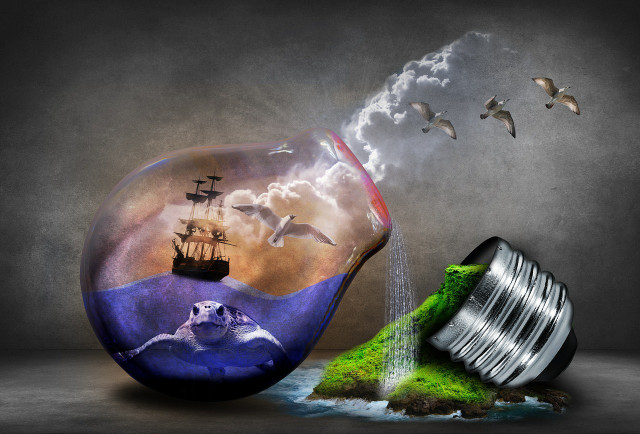


(Foto: CC0 / Pixabay / 0fjd125gk87)
Lighting affects the environment in a number of ways and is a major source of electricity demand globally. Other negative impacts include the raw materials used to produce lighting and lighting products, and light’s impact on and pollution of the nighttime sky. The International Dark-Sky Association (IDA) estimates that at least 30 percent of all outdoor lighting in the U.S. alone is wasted every year — which equates to 3.3 billion dollars and the release of 21 million tons of carbon dioxide.
According to Energy Saver, the light-emitting diode (LED) light source is the most energy-efficient and rapidly-developing lighting technology. Quality LED light bulbs are more durable, last longer, and offer comparable or better light quality than other lighting types. Europe has also seen a massive switch towards LED lighting due to its energy-saving properties, however, recent data would suggest this may not necessarily be in the best interest of the planet or its inhabitants.
A team of researchers at the University of Exeter has found that this shift to LED has led to the development of a new kind of light pollution across Europe. By studying photographs taken from the International Space Station, they uncovered a notable increase in blue light emissions in the areas that have converted to LED lighting — has been found to interfere with the hormone that regulates sleep cycles in humans and other animals, and is associated with breast and prostate cancer.
.
A Glow-in-the-dark Planet
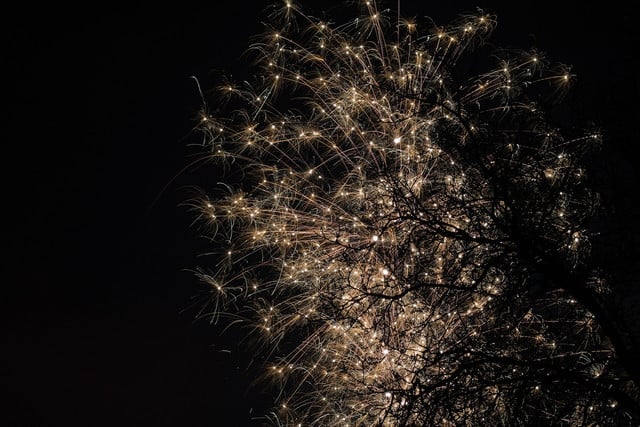


(Foto: CC0 / Pixabay / Lufina)
Earth’s vital signs have worsened to the point that we have reached code red as 16 of 35 planetary vital signs used to track climate change have reached record extremes. We need to act in innovative and dynamic ways to reverse the damage we have already done. Perfecting the technology to create glow-in-the-dark trees from a naturally occurring phenomenon in other species would make a substantial difference to our current carbon and energy crises. Trees are the essence of many modern nature-based solutions.
Recent peer-reviewed research found that nature-based solutions have the potential to increase carbon storage and avoid greenhouse gas emissions at a rate equivalent to 21 percent of the current net annual emissions in the US. They also found that nature-based solutions would provide air and water filtration, flood control, soil health, wildlife habitat, and climate resilience benefits. Add the provision of lighting to the list with glow-in-the-dark trees, and we might just have a super-powered solution.
Last year, US residential and commercial sectors used approximately 211 billion kilowatt hours (kWh) of electricity for lighting alone. Planting glow-in-the-dark trees and growing glowing greenery indoors has the capacity to negate this consumption almost completely if high enough light intensities can be achieved. Considering our efforts to reverse climate change hugely depend on carbon sequestration by trees, growing glow-in-the-dark varieties could have huge benefits for humans and the planet. On-going projects — like agrihoods, green architecture, and even green offices, could really be vamped up with the addition of glowing greenery.
It’s vital that we protect our natural bioluminescent life forms if we want to continue to study them. Carbon dioxide is making our oceans more acidic, which disrupts the natural balance, coral growth, and fish and shellfish reproduction. The heavy processing of fish also adds to emissions. There are many things you can do to save the ocean and the planet until we find glow-in-the-dark trees. Planting and nurturing all life forms will contribute to human and planetary health.
Read more:
- Pacific Garbage Screening Will Remove Tons of Plastic Waste from the Ocean
- Rights of Nature: Global Movement, Legal Status & Potential
- Eco-Anxiety: Climate Change Stress and How to Cope
Do you like this post?






